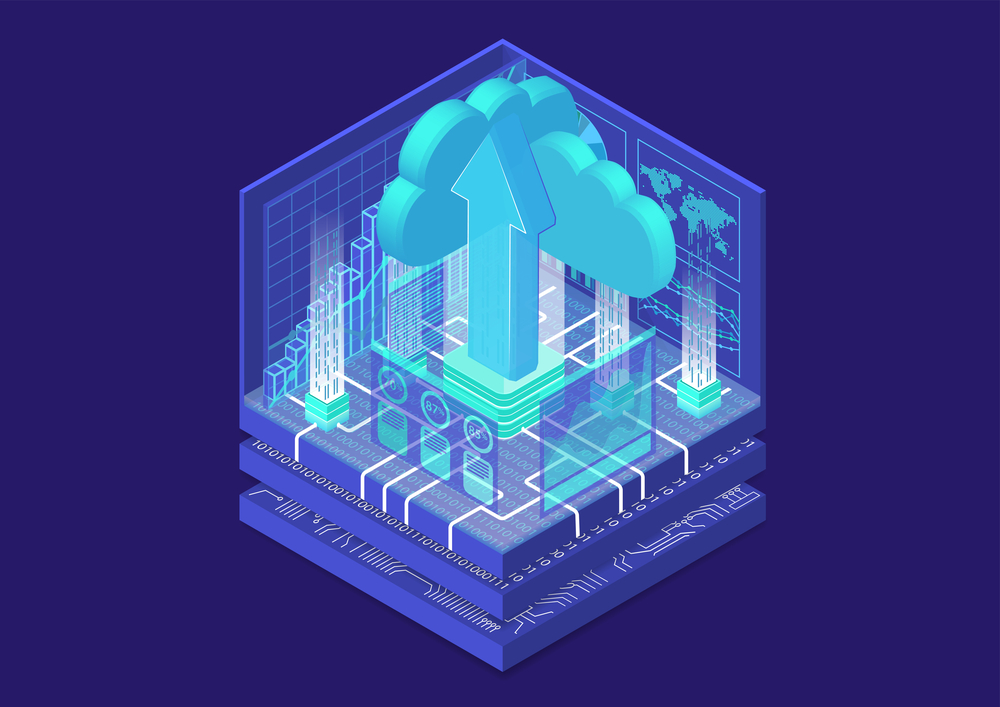
Cloud computing is still on the rise: Gartner estimates that by 2025, 95% of digital workloads will be deployed on cloud-native platforms, representing an increase of 30% from 2021. It’s estimated that ~66% of enterprise spending on application software will be directed toward cloud infrastructure and technology. These large investments put increasing pressure on IT departments to make the most of the cloud.
Migrating to a cloud architecture enables previously impossible capabilities. Even so, and contrary to what many public clouds and contractors might promise, cloud migration and architecture don’t guarantee that you’ll be on cloud nine.
The cloud has many pitfalls that can make your migration more pain than payoff. Integrations with on-premise networks and systems, governance, resource management, and cost oversight are essential to realizing the full benefits of a cloud environment, without hidden costs or wasted resources.
See also: You’ve Migrated to the Cloud, Now What?
The uphill climb to the cloud
For IT teams, moving complex data flows, computations, and applications from a wide range of sources and systems into a new environment may seem daunting. Obstacles to the cloud tend to pop up before it’s even in place, during the migration phase. In a worst-case-scenario, your technical team may find themselves a year into implementation and a few months into deployment, sinking substantial amounts of FTE time and consulting costs into the migration.
Failures while migrating to the new infrastructure can result in substantial system downtime and rushed patches. The process of loading and filtering data from the cloud can overload on-premise systems and cause significant delays. Further, setting up redundant systems for disaster recovery and system reliability can result in unforeseen costs. These unplanned challenges often result in the technical labor to be significantly higher than expected, including ensuring data security, compliance, and smooth integration between cloud and on-premise infrastructures.
Challenges in the cloud
Cloud-based infrastructures can unlock significant benefits, but it is not a cure-all for existing data issues. In fact, a cloud infrastructure may exacerbate existing challenges with your data infrastructure. Limitations of legacy systems may restrict both upstream and downstream traffic and create bottlenecks in workflows. Cloud infrastructure represents yet another component organizations must integrate into often fragile data pipelines.
The pace of change is also a consideration. Cloud technology is evolving rapidly and new developments may render investments obsolete unless they are carefully updated or built to scale and evolve.
Making the most of cloud infrastructure
Despite these challenges, there is a reason for the massive migration to the cloud. Cloud computing can simplify IT processes, cut down on the heavy cost of IT infrastructure, and enable teams to be more productive and creative.
How can you make the most of cloud storage and cloud computing without kicking up a storm? See the recommendations below.
Increase your resource efficiency
Cloud capabilities include the ability to use APIs to simply and instantly assign, alter, or release storage, computing, and network resources to provide new services. By leveraging such features, IT teams can unlock large cost savings and design breakthrough technologies.
If done correctly, cloud storage can have financial and security advantages and improve data ROI across the enterprise. From a cost standpoint, physical resources are typically more expensive than virtual resources in the cloud. Since data in the cloud tends to be duplicated over multiple physical machines, it is more protected from accidental deletion or hardware crashes. In effect, this protects your organization from data loss. Data stored in the cloud can also make it cheaper and easier for teams to access, allowing for enterprise-wide collaboration and integration.
The way an enterprise migrates to and sets up a cloud plays a large role in determining its cost savings, security, and utility for collaboration. This means intelligently moving and curating data, as well as creating a secure path from data to insights.
Leverage intelligent data movement to reduce risk
The “lift-and-shift” model for the cloud may feel like an easy and comfortable path, but simply replicating on-premise hardware and software in the cloud will rob your enterprise of many cloud benefits and carry on many of the issues from your on-premise ecosystem.
Utilize declarative systems: in such systems, users specify ‘what’ they require and the system figures out the complexities of ‘how’ to get there. The following steps can help you achieve this:
- Establish declarative examination of your most important data assets to decide why you want to move them to the cloud.
- Declaratively identify specific purposes and goals that the migration would advance before you move your data.
- Never move an asset without a utility analysis and a clear idea of the advantages of housing the asset in the cloud.
Be intentional about data curation
Many of the pitfalls of migrating to the cloud–including large workloads, security and governance challenges, and cost overruns–result from the sheer volume of data that an organization moves. Organizations can mitigate these risks by migrating only carefully selected datasets and applications. Migrating an enterprise can take years, but it’s possible to significantly reduce this time with a curated migration.
Concrete, realistic goals are critical in the curation phase of your migration. Some criteria for selecting assets for migration include:
- The high quality of the data
- The frequency a data asset is used
- Specific plans to extract more value from an asset with the cloud
Raw data from the field may be better off cleaned, tagged and enriched on-premise, then migrated to the cloud in the form of carefully chosen datasets. Intelligent data movement reduces risk and costs. It maximizes the value of your cloud assets and reduces the scope of data for governance. It also limits exposure of sensitive data to threats and optimizes costs for both compute and storage.
Avoid IoT data swamps
The need for curation extends to the Internet of Things. An army of IoT sensors generate huge volumes of data. Organizations often dump IoT data directly into huge cloud data lakes, making them a central culprit of data swamps. A data swamp is a heap of rich and valuable data that cannot be utilized or operationalized by data teams due to the lack of business context.
IoT data is an iconic example of the massive workloads and storage volumes that drive up the cost of cloud data, often without adding value to the enterprise. Rather than trying to drink from the IoT firehose, it’s better to curate sensor data and migrate only what is necessary.
Streamline the path from data to insights
Many of the points above help improve the value of your data to end-users, and make it easier to operationalize enterprise-wide data. Similar to a city infrastructure, even if the buildings are perfect, you still need roads and bridges to connect them. The same is true for cloud infrastructure. If you have efficiently leveraged cloud resources, intelligently migrated to the cloud, and curated your data, there are only a few bridges left to build:
- Avoid engineering bottlenecks by building a comprehensible layer between IT & Business.
- Shorten the path from data to insights through a central control plane.
- Enable more access while keeping data secure with end-to-end governance and observability.
- Facilitate smart data discovery and management by leveraging metadata.
Strategic planning mitigates cloud growing pains
Nothing can completely eliminate the pain in the cloud. There will always be challenges. However, intelligently managing resources, moving your cloud data strategically, careful curation, and streamlining the path from data to insights goes a long way toward reducing the headaches, and the timeline, associated with data transformation.

Paul Vabakos is Vice President of Business Development at The Modern Data Company, a silicon valley startup that has built the world’s first data operating system — DataOS®. He is responsible for channel partnerships with cloud providers, systems integrators, and independent software vendors. He has thirty years of experience in technology management. He received an MBA, MSEE, MSME from Stanford University before then joining McKinsey’s Palo Alto office to consult to several technology firms. He joined Cisco Systems in the early days launching several programs in the telecom space. He moved to Norwest Ventures where he funded 24 startups across semiconductors, computing, communications, cloud, internet, and software. He seeded and/or co-founded several firms, having joined The Modern Data Company prior to their seed round.


